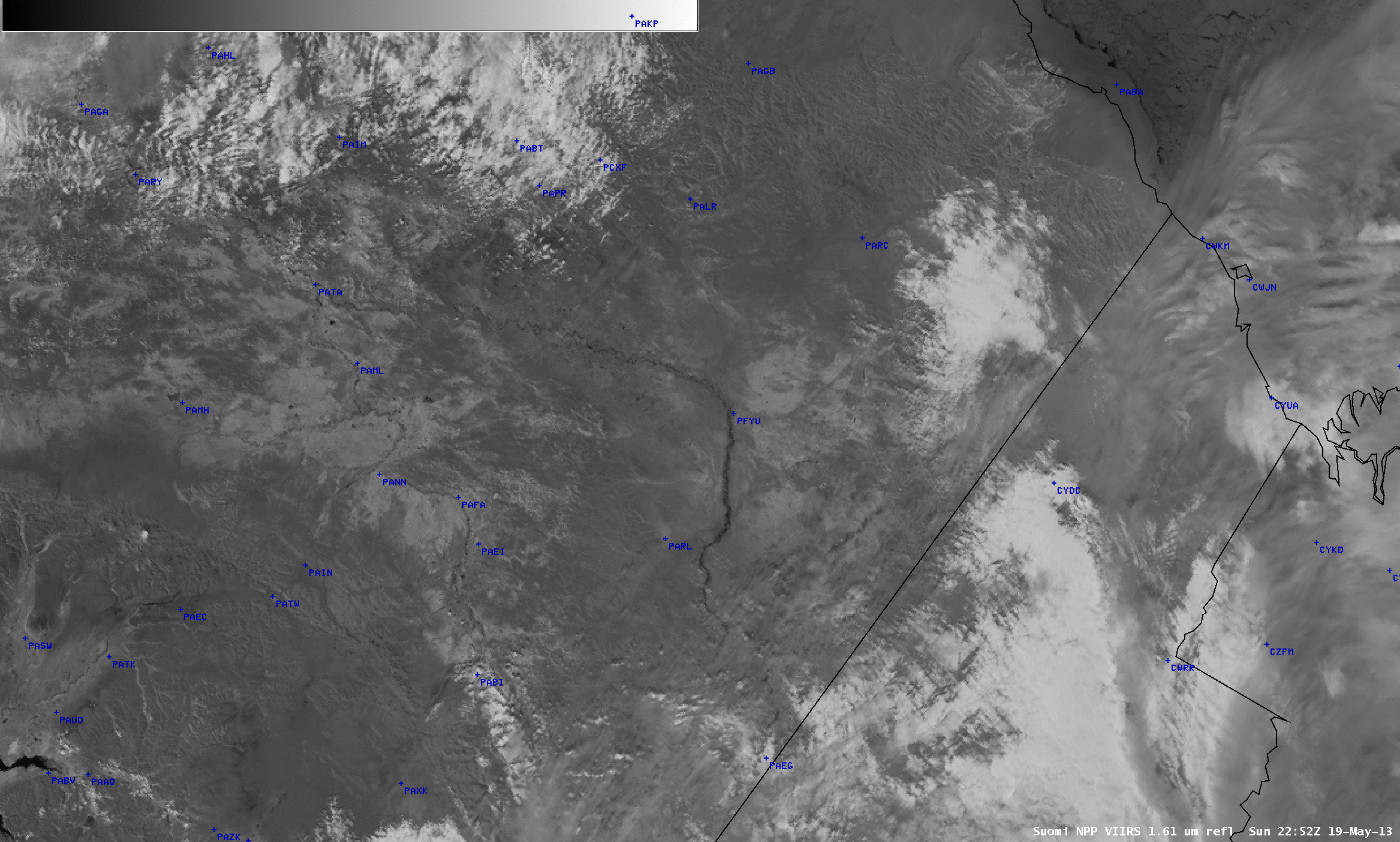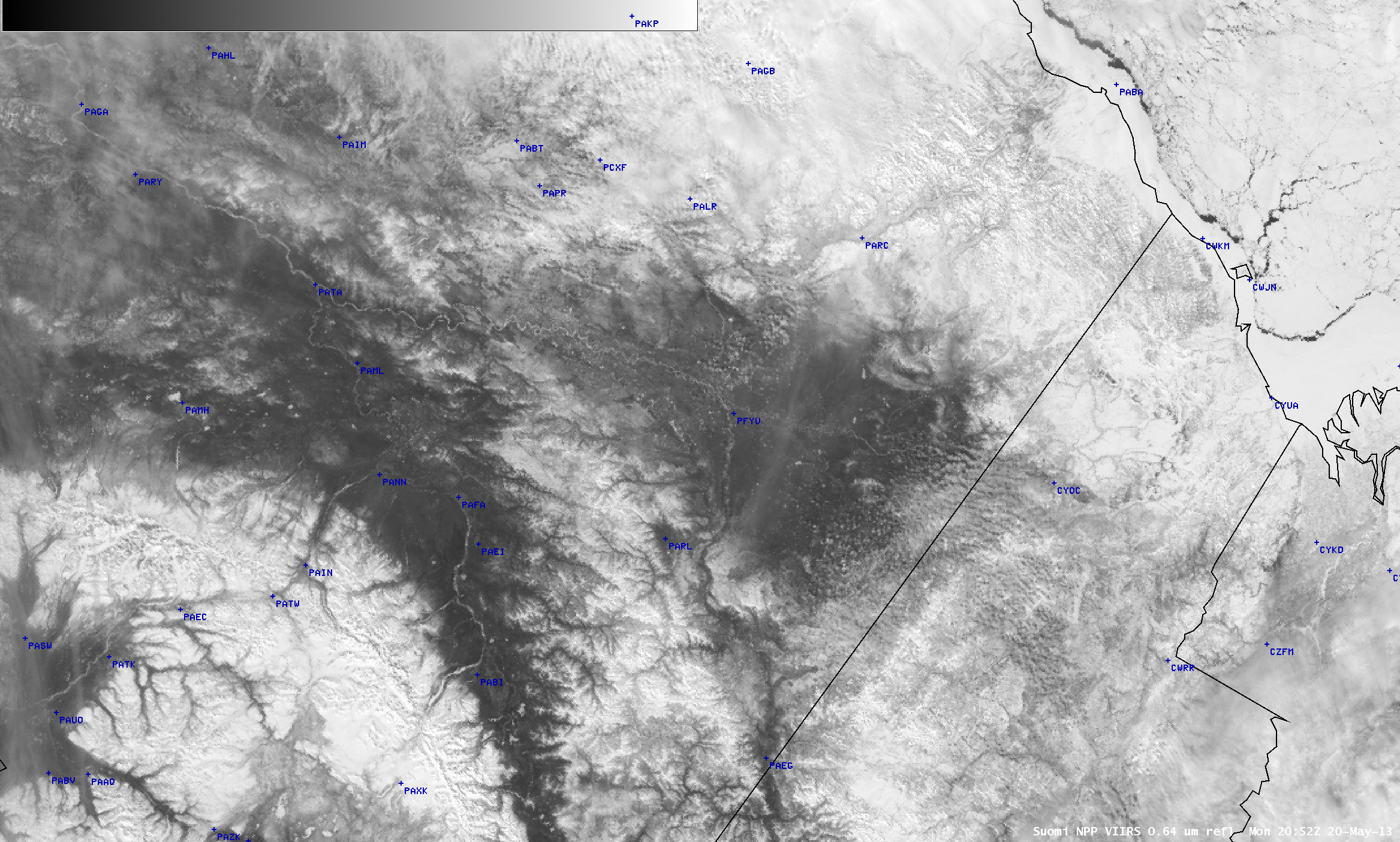Flooding along the Yukon River in Alaska
A comparison of AWIPS images of Suomi NPP VIIRS 1.61 µm “snow/ice discrimination channel” data from 19 May and 20 May 2013 (above) revealed the areal extent of flooding along the Yukon River upstream of the Fort Yukon (station identifier PFYU) area in northeastern Alaska. Both ice and water are strong absorbers at the 1.61 µm wavelength, so they appear very dark on the images. The flooding along the Yukon River began as a surge of ice and water moved through the Eagle, Alaska (station identifier PAEG) area on 17 May, then continued downstream to produce major flooding in the Circle, Alaska area on 19 May (Circle is located about halfway between PAEG and PFYU). An ice jam had formed about 12 miles upstream of Fort Yukon, which then impounded the flow of ice and water that had flooded Circle, leading to the increased flooding seen upstream of Fort Yukon on 20 May.A comparison of Suomi NPP VIIRS 0.64 µm visible channel, 0.86 µm “land/water discrimination channel”, and 1.61 µm “snow/ice discrimination channel” at 20:52 UTC on 20 May (below) showed how the 0.86 µm and 1.61 µm images can be used to identify the darker flooded portions of the Yukon River that are not apparent on the 0.64 µm visible image.



